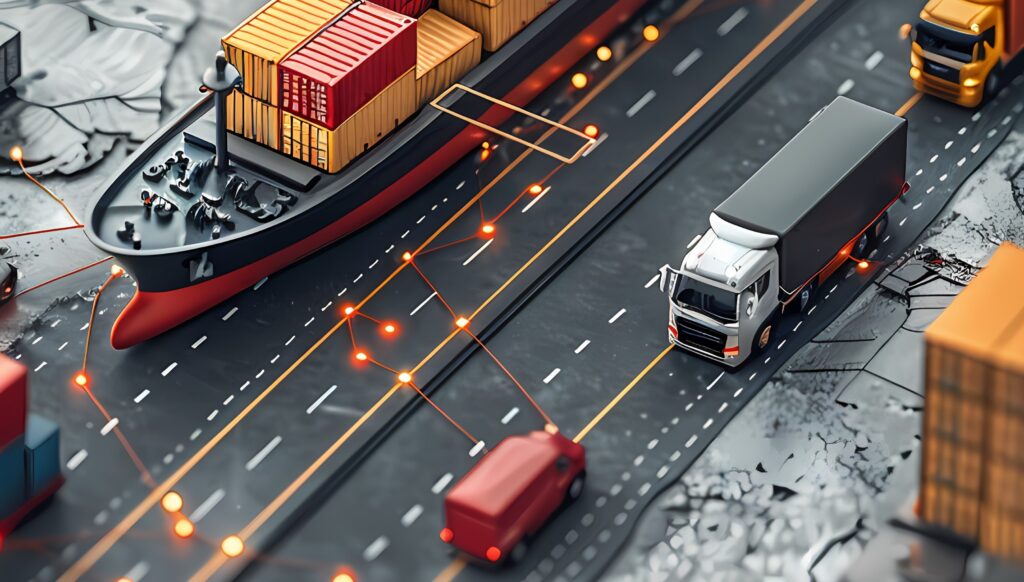
In recent years, resilience has been essential for companies to maintain continuity of operations, mitigate risks, and adapt to changes in an agile manner.
Faced with challenging scenarios, many organizations have realized the importance of creating supply chains capable of withstanding impacts and recovering quickly.
However, in an increasingly volatile and uncertain world, being resilient is no longer enough. To truly thrive amid chaos, it is necessary to adopt an even more powerful concept: antifragility.
A report by the Boston Consulting Group (BCG) showed that companies that adopted antifragile practices experienced a 20% to 30% increase in their recovery capacity compared to companies that focused solely on resilience.
Climate change, political instability, technological advances, and changing consumer demands will continue to test supply chains on a global scale.
Next, learn more about the concept of antifragility in supply chains:
What is Antifragility?
The term “antifragile” was popularized by Nassim Nicholas Taleb in his book “Antifragile: Things That Gain from Disorder.”
Unlike something fragile, which breaks easily under pressure, or resilient, which withstands and returns to its original state, the antifragile grows stronger from stress, volatility, and uncertainty.
In other words, while resilience is content with surviving, antifragility seeks to grow and evolve from adversity.
For a supply chain to be considered antifragile, it must not only withstand impacts but also adapt and strengthen from them.
How to Build an Antifragile Supply Chain?
1. Risk Management and Sustainability
Sustainability promotes practices that reduce risks and increase the supply chain’s long-term resilience.
A sustainable supply chain not only survives adversity but also frequently strengthens and evolves, becoming truly antifragile.
2. Supplier Diversification
Instead of relying on a single supplier or transportation route, an antifragile supply chain spreads its sourcing and logistical options.
This allows the company not only to continue operating during a disruption but also to discover new opportunities and business partners.
3. Continuous Innovation
The supply chains that benefit the most from uncertainty are constantly exploring new technologies, processes, and business models.
This not only makes them more adaptable but also gives them a competitive edge during times of change and challenge.
4. Decentralized Decision-Making
A decentralized structure allows decisions to be made more quickly and effectively, especially in crisis situations.
For example, local teams can adjust operations as needed without waiting for lengthy approvals from a central headquarters.
5. Building Strong Partnerships
In an antifragile supply chain, relationships with suppliers, distributors, and other partners are not merely transactional.
They are collaborative and strategic, allowing for a faster and more effective response to market changes.
6. Constant Learning Journey
Antifragile companies view every challenge as a learning opportunity. They continuously assess the impact of crises and adjust their strategies to be better prepared.
This constant cycle of analysis and adjustment not only strengthens the organization’s resilience but also drives innovation and the ability to anticipate changes.
7. Operational Flexibility
By creating operational processes that can be quickly adjusted in response to changes, the company becomes more agile and prepared to handle unforeseen events.
This adaptability not only allows for resistance to potential disruptions but also enables seizing opportunities that arise in times of uncertainty.
How Technology Can Drive Antifragility?
1. Collaborative Platforms
Collaborative digital platforms, such as e-Procurement, allow companies and their business partners to work together more efficiently and transparently.
By connecting all stakeholders in a single solution, companies can develop joint strategies to mitigate disruptions, strengthening antifragility.
2. Real-Time Visibility
Technologies like IoT (Internet of Things), sensors, and GPS tracking enable companies to monitor their supply chains in real time.
Improved visibility allows companies to quickly identify emerging issues and make informed decisions before disruptions escalate.
3. Automation and AI
Process automation, through solutions like e-Procurement and the use of AI, allows companies to respond quickly to changes in the business environment.
For example, automation can be used to rapidly adjust production levels, while AI can predict disruptions based on historical data and predictive analytics.
4. Data Analytics and Machine Learning
The use of big data and machine learning helps companies identify patterns and trends in large volumes of data, allowing for better forecasting.
For instance, data analysis can reveal new sourcing opportunities or optimize logistical routes to minimize the impact of disruptions.
5. Blockchain and Data Security
Blockchain technology offers an immutable and transparent record of all transactions within the supply chain.
This improves the reliability and integrity of data, reducing the risk of fraud and errors, while facilitating traceability.
Until next time! 😉


 Português do Brasil
Português do Brasil Español
Español Português
Português
